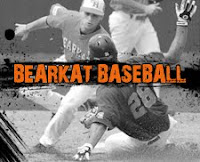When the college baseball season started, there was a lot of talk about the new bats. They are supposed to play more like wood bats and as a result the gaudy offensive numbers were supposed to come down. I talked to a lot of people before the season about it and most agreed.
However, a few said they wanted to see how the numbers played out before making a decision, and said they didn’t think it was going to be a huge difference. Well the NCAA has released its first half numbers, and I think it is very telling about the change in offensive production.
Data from the NCAA statistics staff reveal that in Division I games through April 3 (essentially the midpoint of the season), scoring is down by more than a run per game per team compared with the same time last season (from 6.98 per team in 2010 to 5.63 in 2011), and home runs have dropped from .85 a game per team in 2010 to .47 this year.
Batting average has also declined sharply, from .301 per team at midseason last year to .279 so far in 2011. Conversely, earned-run average has improved, from 5.83 in 2010 to 4.62 this year. In addition, more shutouts have been thrown this year (444) compared with this time last season (277).
I wanted to do the same for the Bearkats this season and see how their numbers stack up against the rest of the country.
The trends for the Kats are similar in some areas. Home runs this year are down for SHSU as well. Last season, the Kats averaged .74 homers per game and this year, they are hitting them at a .38 per game clip. Runs are also down for the Bearkats, although, not by nearly the same margin. In 2010, the Kats averaged 5.94 runs per game. This season they are averaging 5.61 per game.
The batting average is one area, the Kats have not seen a decline. Last year they had a team average of .302 and this year, it is down just a point at .301.
The pitching numbers for the Kats a skewed a bit, because the team overall was down last year, but there is still a huge disparity between the two seasons. Last year, the Bearkats has a staff ERA of 6.38. It is down more than three runs this year at 3.22. Also, the opponents’ batting average is down from .313 last year to .244 through 31 games this season.
The new bat standards that went into effect this season feature a stricter “Ball-Bat Coefficient of Restitution” standard (BBCOR) that reduces a batted ball’s exit speed.
The new BBCOR formula provides a better measure of a bat’s performance and allows the Baseball Rules Committee and bat-testing laboratories to better predict field performance based on lab tests. The goal is for non-wood bats that meet this new standard to perform similarly to wood bats.
The NCAA Baseball Research Panel, a group charged with maintaining the protocol for testing bats in the college game, recommended the new standards after reviewing Division I statistics from previous years that revealed sharp increases in offensive performance, particularly in home runs and runs scored, that was attributable mostly to the kind of bats in use at the time.
In 2007, the per-game average of home runs hit was .68 per team. That increased to .84 in 2008 and to .96 in 2009. It was .94 last year.
Runs scored per game experienced a similar trajectory. The 6.1 average per team in 2007 ballooned to 6.57 in 2008, 6.88 in 2009 and 6.98 in 2010.
“These new bat standards have brought the game back to its original style of play,” said Tim Weiser, deputy commissioner at the Big 12 Conference and chair of the Division I Baseball Committee. “It has put a premium back on strategy, pitching and defense, and not on the No. 9 hitter being able to hit the ball 400 feet just like the No. 4 hitter can. That’s what a lot of the positive feedback I’m hearing is centered on.”
-- Jason Barfield



No comments:
Post a Comment